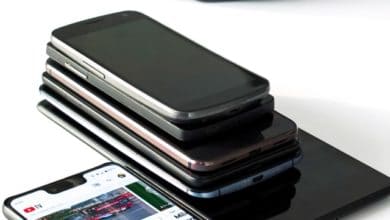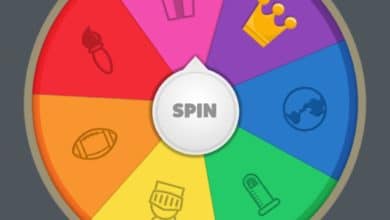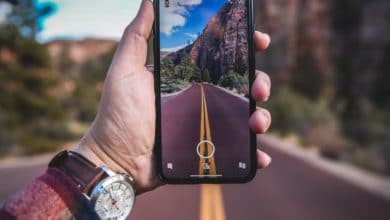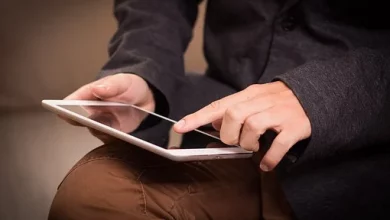Cheapest phones for PUBG mobile can be hard to find. especially when you don’t know what you’re looking for so we ask you; are you a PUBG mobile gamer but your phone is being a hassle? Do you want to buy a new gaming smartphone but you feel puzzled about what phone will be best for you and will not hurt your wallet?
I will try to cover the waterfront for you to find what choice works best for you, but first let me clarify and demonstrate to you what are the things you should be looking for when buying your new gaming smartphone, and of course that means some hardware demonstration to smartphone specs and hardware. Let’s take a look at the features and capacity you need on your smartphone to have the best gaming experience when playing your favourite online game.
- The best budget phone for mobile gaming
- What to specifications to look for in a gaming phone
- The cheapest phone for PUBG mobile
The best budget phone for mobile gaming
Product Description
- SELFIE CAMERA Single:13 MP, f/2.0, (wide), 1/3.1″, 1.12µm Features:HDR, panorama Video:1080p@30fps
- SOUND Loudspeaker: Yes, 3.5mm jack: Yes
- COMMS WLAN: Wi-Fi 802.11 a/b/g/n/ac, dual-band, Wi-Fi Direct, hotspot, Bluetooth:4.2, A2DP, LE, GPS: Yes, with A-GPS, GLONASS, BDS, NFC:No ,Infrared port:Yes. Radio: FM radio. USB:USB Type-C 2.0, USB On-The-Go
- FEATURES Sensors:Fingerprint (rear-mounted), accelerometer, gyro, proximity, compass
- BATTERY:Type Li-Po 4000 mAh, non-removable. Charging:Fast charging 18W
- MISC: Colors Neptune Blue, Moonlight White, Space Black, Nebula Purple, Cosmic Purple. Models: M1908C3JH, M1908C3JG, M1908C3JI. SAR:0.26 W/kg (head) 1.00 W/kg (body). SAR EU: 0.19 W/kg (head) 1.09 W/kg (body).Price: $ 160.00 / € 155.99 / £ 159.00 / ₹ 13,499
- TESTS:Performance AnTuTu: 141915 (v7), 161572 (v8).GeekBench: 5590 (v4.4), 1339 (v5.1).GFXBench: 5.9fps (ES 3.1 onscreen).Display Contrast ratio: 1521:1 (nominal).Camera Photo / Video Loudspeaker:Voice 78dB / Noise 72dB / Ring 81dB Audio quality: Noise -94.0dB / Crosstalk -93.3dB.Battery life:Endurance rating 108h
What to specifications to look for in a gaming phone
Before you purchase any phone on this list or in general it is important to know what to look for when buying, here is a list and details about specifications to look for when buying a mobile gaming phone:
Central Processing Unit (CPU)
The processor is the brain of a device. It’s what handles the instructions of software apps. A processor does consist of multiple cores which are the Dual, Quad, Hexa, and Octa-core. What do these cores do exactly? Processor cores distribute the work that comes in when you are using your phone. One core has a maximum number limit of instructions that it can process within a certain amount of time.
Put in mind that the central processing unit inside your smartphone is responsible for running all the logic and operations required by your smartphone’s operating system as well as your apps. Each processor core will run at a clock speed commonly between 2 and 3 GHz in smartphones.
CPU or Central Processing Unit also do affect the performance of your smartphone. A phone’s central processing unit can be classified as a low-range, mid-range, or high-range. Low-range CPUs are less fast compared to mid-range CPUs.
The challenge with central processing units is that it is difficult for a normal buyer to identify the classification of the central processing unit of the phone he is buying. Even after identifying the classification of the processing unit, comparing phone processing units under the same classification is also not that easy thing to do. Information such as the number of gigahertz and cores (GHz) are numbers that can be really confusing.
Most websites that review the processing unit performance of phones use tools and benchmarks to test the processing unit speed and compare it with other phones. However, after reading the results, you will still find it difficult to understand the graphs shown to you without actually experiencing the use of any of the units that are used to compare those phones.
However, the overall speed and performance of the phone are generally determined by the combination of the random access memory size, central processing unit specs, and the Operating System (OS). You can still get an idea of the level of performance by looking at the paper description of these specs, but the best way for you to know the performance of any phone is to read the reviews from the people who already bought the phone themselves.
Put in mind that a phone’s CPU clock speed determines the speed of your gaming smartphone with normal operations and the core count determines how many tasks it can do simultaneously without lag or hassle. The old days of dual-core and quad-core smartphones are almost gone and forgotten and you should not be looking for such phones even if they have appealing prices because they will not help you at all with your gaming experience. Now is the time for octa-core or eight cores, by that I mean a gaming smartphone that can easily handle many times more functions together compared to the dual-core and the quad-core. The chipset is also called SoC and the preferred SoC for most gaming smartphones is Qualcomm Snapdragon 865. However, Snapdragon 855 and above will be perfectly suitable for most mobile phone gamers. When you start doing something intensive, like playing a game, your smartphone will switch to the higher-power set of CPU cores so that you get extra power and of course, a smoother gaming experience. What this means is that more cores don’t necessarily make for a better gaming device, because the Google Pixel 3, for instance, is said as having a 2.5 GHz + 1.6 GHz 64-Bit Octa-Core central processing unit. Well, what does that mean for you if you’re just interested in playing video games? Well, it can mean that more cores don’t necessarily mean more processing power as I mentioned above. For instance, a hexacore central processing unit with faster cores may perform a lot better at intensive tasks than an octa-core having a smartphone, which is designed mainly with power saving in mind more than gaming performance or performance in general. Always put in mind that two phones with the same chipset and CPU might benchmark entirely different when it comes to playing video games or intensive power actions in general.
. So when picking a processor, make sure you not only look at the number of cores but also compare clock speeds to get a better idea because most processing units manufacturers try to create a balance between power and energy efficiency. For example, Qualcomm’s new Snapdragon 845 chipset has eight cores, four of these are clocked at 2.8GHz to deliver the best performance for gaming or general activities, and the other four at the other hand are clocked at only 1.7GHz, for delivering efficiency and consuming less battery and therefore achieving balance.
In short, the newer the processor is and the higher the clock speed, the more powerful the smartphone is for heavy long gaming sessions. So, if you need a smartphone for gaming or other heavy tasks, you should be looking for a smartphone with higher and higher clock speeds.
Graphics Processing Unit (GPU)
It is really similar to a central processing unit but for the different part that it is exclusively made for handling graphics functions. Unlike the chipset processor which may have four or eight powerful cores for important functions, a GPU can have hundreds of normal cores to handle the fast and complex graphics. In a smartphone, the GPU (graphics processing unit) is a central part of the system hardware. It differs from the CPU by handling the visual rendering elements of a phone’s display, whereas the CPU is the brain of the device, handling all the heavy computation and logic behind the screen. More cores mean a smoother game; whatever the game you are playing. A graphics processing unit (GPU) is a specialized electronic circuit designed to rapidly manipulate and alter memory to accelerate the creation of images in a frame buffer intended for output to a display device, I will explain what is an FPS (frames per second) is in detail so do not worry
Frames per second (FPS)
This frequency is usually measured by frames per second (fps). For example, at 30 fps, 30 distinct images would appear in succession within one second. Frame rate, then, is the speed at which those images are shown, or how fast you flip through the book. It’s usually expressed as frames per second. Your frame rate, measured in frames per second (FPS), describes how smoothly a given game runs on your phone. The more frames you can pack into one second, the smoother motion will be on-screen. Lower frame rates—that is, frame rates lower than 30fps or so will appear laggy or slow. It’s a useful metric for evaluating your hardware’s gaming performance and is often used by the PC fan base looking to boast about their system.
The refresh rate is the number of times the graphic frames appear as the screen renews: so the higher the value, the better. This gives you a smooth view of the graphics, especially the video. Though you’ll find many smartphones on the market with a refresh rate of 60 Hz, elite gamers opt for values as high as 120 Hz, which means the graphics on the screen update 120 times a second. I recommend a refresh rate of at least 90 Hz for gaming. Your framerate seems to be affecting the rate of fire and recoil of weapons in PUBG, for high rate-of-fire guns, such as the Groza, a lower framerate result in a lower rate of fire and more manageable recoil, and vice versa.
Random access memory (RAM)
RAM is a super-fast type of storage, it is faster than your phone’s main storage (ROM) where your apps, photos, videos, and music live and it helps your smartphone to work and feel fast.
You can think of RAM as your pocket and your phone’s main storage as your backpack. It’s much faster and easier to pull something out of your pocket than it is to pull something out from your backpack which requires more time and effort.
When you turn on your phone and open an app for the first time, your phone pulls the operating system (OS, android for instance) and app’s data from your phone’s slower main storage and stores the bulk of that operating system and app data in your phone’s faster RAM so you can use different elements and features of the OS and app quickly.
When you’re finished with the app you’re using, your phone keeps the app you last opened and everything you were doing on it in the phone’s random access memory, even if you switched to a different app.
When you return once again to an app you used a while ago, it will open right where you left it off as if you never even left the app in the first place because it has been stored safely in your phone’s random access memory. Essentially, the apps you used are kept running in the background while you are using different apps.
Switching between apps and picking up right where you left off is called “multitasking.” If a phone is multitasking well and smoothly without feeling that it is lagging, it’s because it makes good use of the random access memory or simply has a lot of it.
If a phone didn’t have random access memory, that would be a hassle because apps would fully close every time you switch apps. That means apps would need to be re-opened once again fully as if you opened them for the first time after turning on your phone, which will cause an unpleasant and unnecessary delay before you can continue using the app once again. Imagine reading a blog while using Facebook for instance and someone calls you, you most probably will lose the post you were reading before that call.
Your phone’s main slower storage (ROM) could potentially keep your OS and used apps running in the background, but it’s much, much slower than your phone’s random access memory. Your phone could have the fastest chip in the world and it would still feel slow without random access memory.
The size of Random-Access Memory or RAM has a huge effect on the performance of the phone that you are going to buy. A larger RAM will enable you to use much more apps at the same time without the feeling of lag compared to smaller random access memory.
When you run an application or a game, it uses a specific amount of random access memory until you close it.
If you have too many apps running in the background and your phone starts to lag, this means that you must close some of your background running apps if you are not using them for your phone to free some random access memory so that your phone will be running smoothly again as before. If you have too many apps running in the background and your phone starts to lag, this means that you must close some of your background running apps if you are not using them for your phone to free some random access memory so that your phone will be running smoothly again as before. Put in mind that the more random access memory you put into your smartphone, the more power that will be used the more your battery life would be shorter, because random access memory takes up the same amount of power regardless of what’s in it if it’s an application or it’s just free, your battery is still paying for it in terms of power.
In other words, if you aren’t using the random access memory, then it may be an unnecessary effort for your battery. Those background processes that I mentioned earlier also have an associated cost, as anyone who has used the Facebook app on Android will know.
Because even if they’re not doing much work or effort, they can cause the processor to be ready to service any work that they have to do and that surely contribute to much more energy drain. But anything over an 8GB of random access memory is probably overkilled for the vast majority of people using smartphones today.
Display
Your smartphone screen is the visual interface where your game appears. Therefore, it is important to have a large enough screen that the objects in the game and their movements are visible and trackable. Typically, at least a 6.5” screen size is preferred by gamers for an enhanced experience with most games. Currently, there are six main display types used in mobile phones: TFT LCD, IPS-LCD, Capacitive Touchscreen LCD, OLED, AMOLED, and Super AMOLED.
Let’s start with LCDs. TFT LCD displays are considered the most common. They deliver quality images and higher resolutions. IPS LCDs, which are mainly found in higher-end smartphones, offer improved battery life and deliver wider viewing angles. TFT LCDs are supposedly the most common type of display unit found in mobile devices. TFT LCD gives you good image quality and higher resolutions compared to earlier generation LCD displays however, in narrow viewing angles and indirect light or sunlight there’s poor visibility. IPS LCDs are the next level of TFT LCD displays providing wider viewing angles and lower power consumption which leads to much-improved battery life. IPS-LCDs obviously are costlier than normal TFT LCD and hence located only on higher-end smartphones. These types of displays are often found in iPhones, but by Apple’s proprietary names, “Retina,” or “Super Retina.” Then, there are capacitive touchscreen LCDs, which rely on the touch of a human finger for input.
OLEDs (Organic Light Emitting Diode) are considered an up-and-coming display technology – they don’t require any backlighting to display pixels. Fundamentally, each pixel emits its own light, allowing for darker blacks and brighter whites. This happens to be the newest technology for displays of mobiles and monitors. As far as the OLED tech is concerned you will find an organic material that is placed between two conducting sheets (an anode and a cathode), which are also put between a glass top plate (seal) and a glass-bottom plate (substrate). The time an n electric pulse passes or is applied between the two conducting sheets, electro-luminescent light is produced directly from the organic material sandwiched between. AMOLEDs (Active-Matrix Organic Light-Emitting Diode) combine a TFT display with an OLED display for energy savings, AMOLED screens can show us many things that we are present on OLED display like brilliant colour reproduction, lightweight, good battery life, proper brightness, etc.
However, super AMOLED displays take upon the AMOLED displays and is primarily developed by Samsung. Super AMOLED is constructed with touch sensors placed on the display itself, as opposed to creating a separate touch-sensitive layer (as in capacitive touch screen). This makes it the thinnest display technology on the market. Super AMOLED displays are currently only present in Samsung devices but more phones could use the technology in the future.
The display technology that you will usually find in phones under 150 dollars is an IPS LCD display. This display technology is very vivid and can also be found in more expensive phones like iPhones. This type of technology is also very energy-efficient.
When it comes to displaying sharpness, you must consider the combination of the display size and display resolution because both affect the pixel density. Pixel density is measured in PPI or Pixels Per Inch. The PPI is a calculation that returns the number of physical pixels per inch on a screen or display of a device. It’s often referred to as Pixels Per Inch or PPI.
Pixel density has become increasingly important as the resolution of screens has increased dramatically in the past several years. For example, the Apple iPhone XR has a high-resolution screen with a pixel density of 323. In contrast, older XGA monitors had a PPI of around 85. Increased PPI can improve the quality of the viewing experience. Even when held closely, high PPI screens do not look pixelated (assuming that the image is of high enough quality, to begin with). The higher the PPI, the sharper the screen display. However, you do not need a phone with a very high pixel density.
Even the older iPhones (iPhone 7 for instance) only settle at 326 PPI as compared to other high-end phones that have around 500 PPI. This is because a very high PPI will not make a difference due to the limit of what our eyes can see.
For wallet-friendly smart phones, you can expect a 260 to 295 PPI. This range is already very decent, satisfactory and does the job.
That being said let’s jump right into my gaming smart phone suggestions
The cheapest phone for PUBG mobile
Product Description
- NETWORK Technology GSM / HSPA / LTE
- LAUNCH Announced2020, April 06 Status Available.Released 2020, May 19
- BODY: Dimensions 162.2 x 75.6 x 8.4 mm (6.39 x 2.98 x 0.33 in) Weight: 180 g (6.35 oz) SIM: Single SIM (Nano-SIM) or Hybrid Dual SIM (Nano-SIM, dual stand-by)
- DISPLAY:Type IPS LCD, HDR Size:6.53 inches, 104.7 cm2 (~85.4% screen-to-body ratio) Resolution: 1080 x 2340 pixels, 19.5:9 ratio (~395 ppi density)
- PLATFORM:OS Android 10, planned upgrade to Android 11, TCL UI Chipset:Qualcomm SM6125 Snapdragon 665 (11 nm) CPU:Octa-core (4×2.0 GHz Kryo 260 Gold & 4×1.8 GHz Kryo 260 Silver) GPU:Adreno 610
- MEMORY:Card slot microSDXC: (uses shared SIM slot) Internal:64GB 6GB RAM, 128GB 6GB RAM, 256GB 6GB RAM 64GB eMMC 5.1, 128/256GB UFS 2.1
- MAIN CAMERA Quad:48 MP, f/1.8, 26mm (wide), 1/2.25″, 0.8µm, PDAF 8 MP, f/2.2, 13mm (ultrawide), 1/4.0″, 1.12µm2 MP, f/2.4, (macro)2 MP, f/2.4, (depth).Features:Dual-LED flash, HDR,panorama Video:4K@30fps, 1080p@30/120fps
- SELFIE CAMERA:Single 16 MP, f/2.2, 28mm (wide), 1/3.06″, 1.0µm Video:1080p@30fps
- SOUND:Loudspeaker Yes, 3.5mm jack:Yes
- COMMS WLAN: Wi-Fi 802.11 a/b/g/n/ac, dual-band, Wi-Fi Direct, hotspot, Bluetooth:5.0, A2DP, LE, aptX GPS:Yes, with A-GPS, GALILEO, NFC:Yes ,Radio: FM radio USB:USB Type-C 2.0, USB On-The-Go
- FEATURES:Sensors Fingerprint (rear-mounted), accelerometer, gyro, proximity, compass
- BATTERY: Type Li-Po 4000 mAh, non-removable
- MISC Colors Arctic White, Mariana Blue Models T770H, T770B






